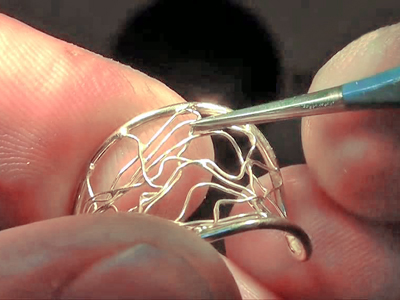- Types of processing: ablation, microdrilling, perforation, structuring
- Machined materials: metals, plastics, ceramics, semiconductors, paper
- Advantages: high precision, accuracy, repeatability of machining, no damage to the material
- Industries: photovoltaics, medical industry, tobacco industry, semiconductor and electronic circuit manufacturing


Photo gallery
Ablation
Microdrilling
The microscale laser drilling technique makes it possible to produce blinded or through holes with inclined or parallel walls. The resulting holes can reach diameters of several micrometers and depths of single millimeters. The high speed of the process and accuracy of less than 1 micrometer make precise processing of materials such as metals, semiconductors, plastics or ceramics up to several millimeters thick possible.
During laser microdrilling, the same phenomena occur as in the laser ablation process, with the holes being made in the same way as on the macro scale. This means that this laser micromachining boils down to three basic methods:
- impulse drilling, in which the hole is drilled using a series of impulses;
- trepanning drilling, where an initial hole is first drilled and then widened with a spiral motion;
- spiral drilling, in which a laser beam sweeps a spiral motion over the workpiece to create a hole of any shape.
Perforation
A special type of laser microdrilling is perforation, which is the creation of a matrix of evenly spaced through-holes. The resulting holes are characterized by a diameter of 50-400 microns while maintaining a high process speed – often higher than conventional manufacturing techniques. Laser perforation is used primarily in paper and plastic processing and in the tobacco industry.
Structuring
From a technological point of view, structuring is a process similar to ablation, i.e. sublimation of the outer layer of a material under the influence of short pulses of high energy generated by a laser. However, the main difference lies in its application, as the structuring process creates evenly distributed shapes several micrometers high. The surface thus modified is characterized by altered physical and chemical properties. Structuring is used primarily in semiconductor manufacturing technology and photovoltaics (for lithography).
